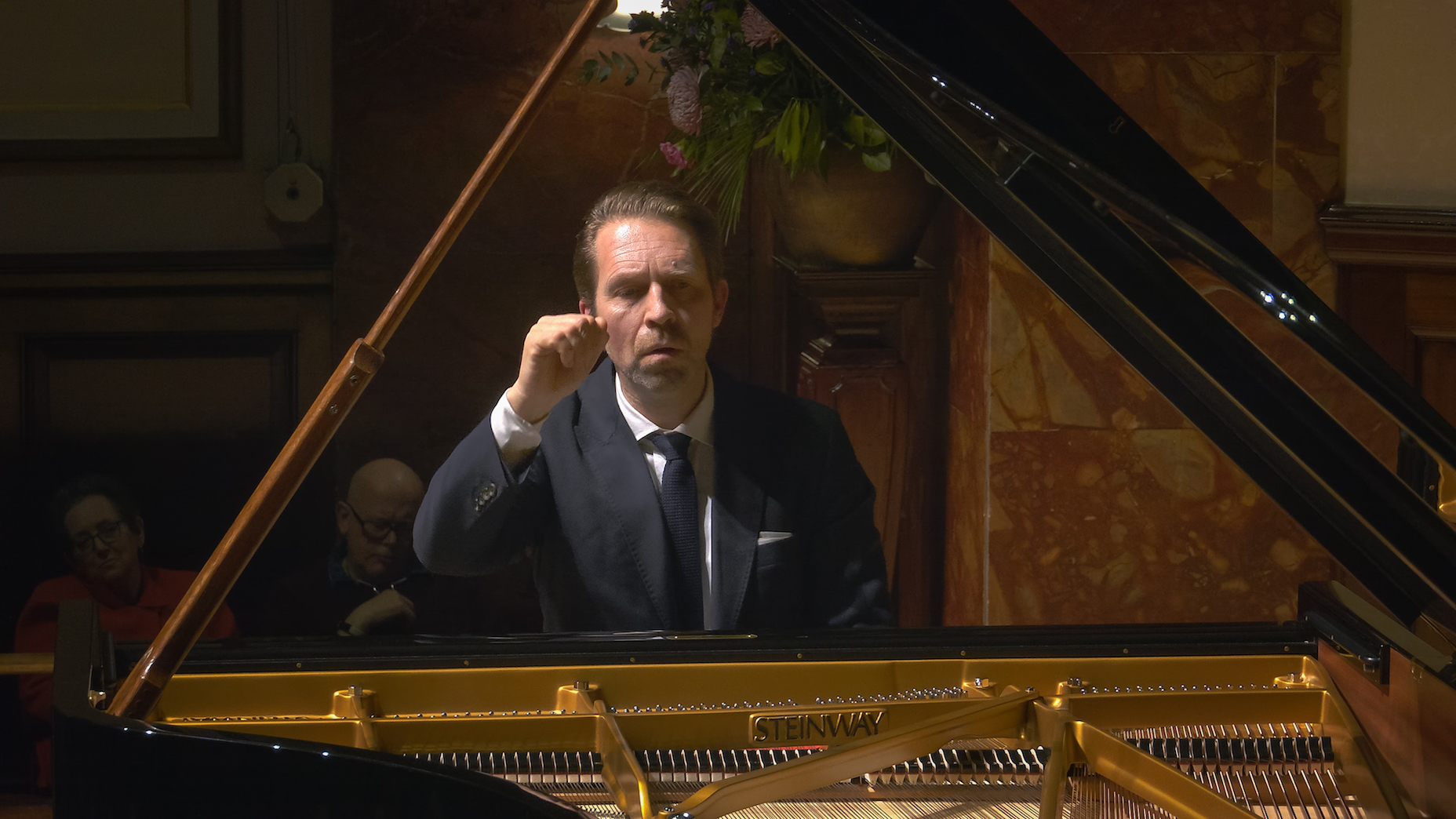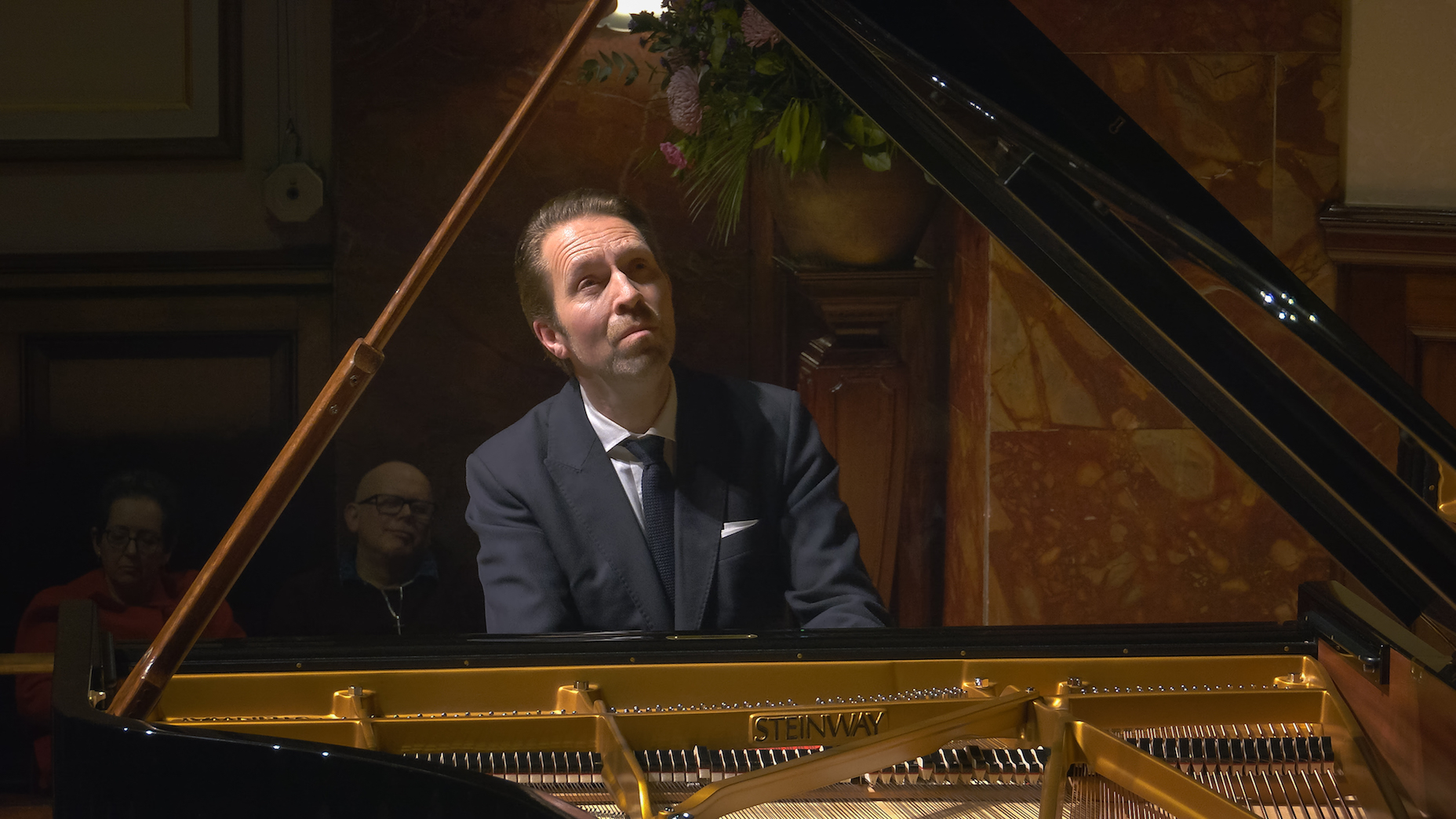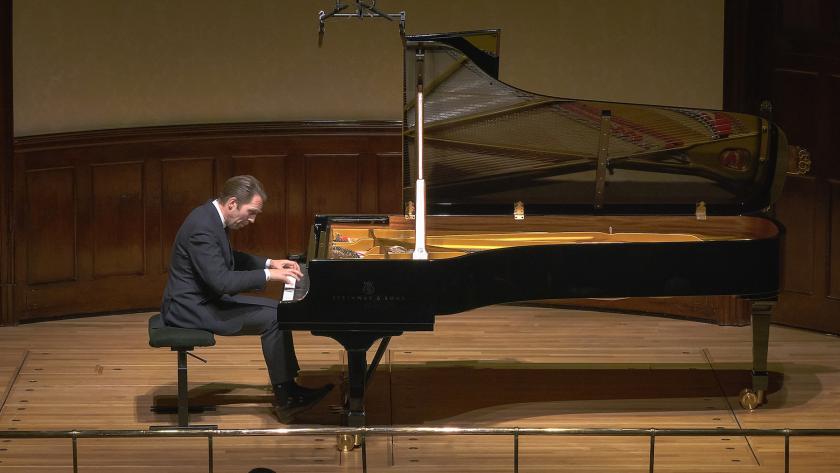Forthright and upright, powerful and lucid, the frank and bold pianism of Leif Ove Andsnes took his Wigmore Hall audience from Norway to Poland (or rather, Paris and Majorca) with a final stop in France. A recital that began with two large-scale Norwegian sonatas – one a remarkable discovery – culminated in the ostensibly remote sound-world of Chopin’s 24 Preludes, part-written on the Balearic island.
Yet Andsnes’s sturdy, direct, immaculately even-tempered, playing united these disparate territories, and even stamped his Debussy encore with the same robust character. Fans of a more nebulous, ethereal or introspective Chopin might have hoped for more gossamer sensuousness from time to time. But the Preludes can accommodate more than one type of keyboard personality, and Andsnes brings a thrilling architectural clarity of line and form to each elusive fragment.
Grieg’s youthful E minor sonata shows the patriotic curator of Norwegian vernacular melody forging his lifelong compact with the harmonic and structural grammar of German art music. Andsnes began in the muscular, even heroic, vein in which he meant to continue. For a hall of this modest size and sensitive acoustic, I felt that his dynamic range sometimes veered too much towards the extra-forte side – but others near me disagreed. In any case, the impassioned runs of Grieg’s allegro gave way to a singing andante and, in the minuet-like third movement, to a wistful, faraway delicacy, before the galloping ride of the finale lets the mountain trolls out to play. Andsnes’s ability to channel Grieg’s contrasting voices, from skittish to wistful to demonic, gave a near-symphonic breadth and scope to his reading of the work. The evening’s chief revelation came in the form of the sonata number 29, “Sonata Etere”, by the prolific but now little-played Geirr Tveitt. Another Norwegian who studied abroad (in Leipzig, like Grieg, then Paris with the ubiquitous Nadia Boulanger), Tveitt mined the rich folk music of his native Hardangerfjord for inspiration but – as Andsnes explained – tragically lost more than two-thirds of his manuscripts in a house fire in 1970. The composer himself premiered this work at the Wigmore in 1947; it has not been heard in Britain since. Andsnes’s introduction invoked its French pianistic colouring and Prokofiev-like rhythmic drive, but in the event it was Bartók at his strangest and wildest who seemed, for me, to supply the right comparator. This is the only Tveitt sonata to survive the conflagration, though that “29” may allude to Beethoven’s Hammerklavier.
The evening’s chief revelation came in the form of the sonata number 29, “Sonata Etere”, by the prolific but now little-played Geirr Tveitt. Another Norwegian who studied abroad (in Leipzig, like Grieg, then Paris with the ubiquitous Nadia Boulanger), Tveitt mined the rich folk music of his native Hardangerfjord for inspiration but – as Andsnes explained – tragically lost more than two-thirds of his manuscripts in a house fire in 1970. The composer himself premiered this work at the Wigmore in 1947; it has not been heard in Britain since. Andsnes’s introduction invoked its French pianistic colouring and Prokofiev-like rhythmic drive, but in the event it was Bartók at his strangest and wildest who seemed, for me, to supply the right comparator. This is the only Tveitt sonata to survive the conflagration, though that “29” may allude to Beethoven’s Hammerklavier.
Two core themes in folk-like modal scales wind inexorably through the work, wrought into elaborate variations but then recalled in skeletal, staccato iterations with a heavily pedalled underpinning that leaves echoing, sinister resonances. Tveitt’s stipulation of an amplified lower register here suggests that he was looking forwards – to electronic music – as much as back to the local harmonies of Hardanger. Andsnes spotlit the dense expressionistic colour of the opening movement, “In Cerca Di”, with its stark chordal and chromatic clashes that almost resemble a Munch painting in sound. Then came the 19 remorseless, often eerily beautiful, recreations of the second theme in the “Tono Etereo” section.
The variations strive towards a tonal resolution that forever eludes them, in a sort of blasted pastoral haunted by dreams of peace but plunged into the chaos and violence of 1940s modernity. A final, driving dance, “Tempo Di Pulsazione”, whirls, stutters and tumbles towards its frenetic sign-off, as much Appassionata as Hammerklavier. Crouched over the keys, rapt and intense, Andsnes in every sense performed this memorable piece with the ferocious drama it demands. It’s a tough trip, jagged and ungainly at times, but one that yields some spectacular vistas.
Anyone who imagined that Andsnes might then lower the temperature into a dreamy or relaxed set of Preludes would have been utterly mistaken. Bracing, even brawny, his Chopin has no time for genteel, valetudinarian hints and whispers. We hear, in those dialled-up dynamics, the confident, even outrageous, invention that flows through each dazzling miniature. Though his legato lines can be as smooth and silvery as anyone’s, Andsnes’s Chopin is not, on the whole, the place to find the boneless, liquid rubato effects that one tradition of Romantic pianism cultivates. From the grip and heft of his C major opening, the Norwegian sounded more of a Lisztian keyboard warrior, forceful, strenuous and utterly in command. Not that he lacked subtlety, in the deep sombre stream of E minor (no. 4) or the sparkling waterfall of D major that follows it. A massively solid left hand lent gravity to the brief tolling of E major (9) and nobility to the nocturne-like melodies of F sharp major (13). As for the relentless low drip of D flat major (which Chopin never called the “Raindrop”), Andsnes downplayed the doominess and made the lyric grace of the right-hand theme glow and float. Majestic and well-muscled, his full, bold tone struck gold in pieces such as the C minor chorale (20). But this sheer consistency sometimes resulted in a narrower range of tonal contrasts: B flat major (21) felt a little more, or less, than the marked cantabile. Still, this big, brave sound made the sequence close in richly dramatic style with some superbly stormy D minor weather in 24.
Not that he lacked subtlety, in the deep sombre stream of E minor (no. 4) or the sparkling waterfall of D major that follows it. A massively solid left hand lent gravity to the brief tolling of E major (9) and nobility to the nocturne-like melodies of F sharp major (13). As for the relentless low drip of D flat major (which Chopin never called the “Raindrop”), Andsnes downplayed the doominess and made the lyric grace of the right-hand theme glow and float. Majestic and well-muscled, his full, bold tone struck gold in pieces such as the C minor chorale (20). But this sheer consistency sometimes resulted in a narrower range of tonal contrasts: B flat major (21) felt a little more, or less, than the marked cantabile. Still, this big, brave sound made the sequence close in richly dramatic style with some superbly stormy D minor weather in 24.
As for the encore of Debussy’s “Sunken Cathedral”, it came up as brilliant, luminous and polished as the restored Notre Dame itself. Does Andsnes miss a sense of impalpable mystery in such pieces? Occasionally, maybe – but his high musical intelligence and unerring communicative power made this journey of discovery, and rediscovery, both a tonic and a treat.















Add comment